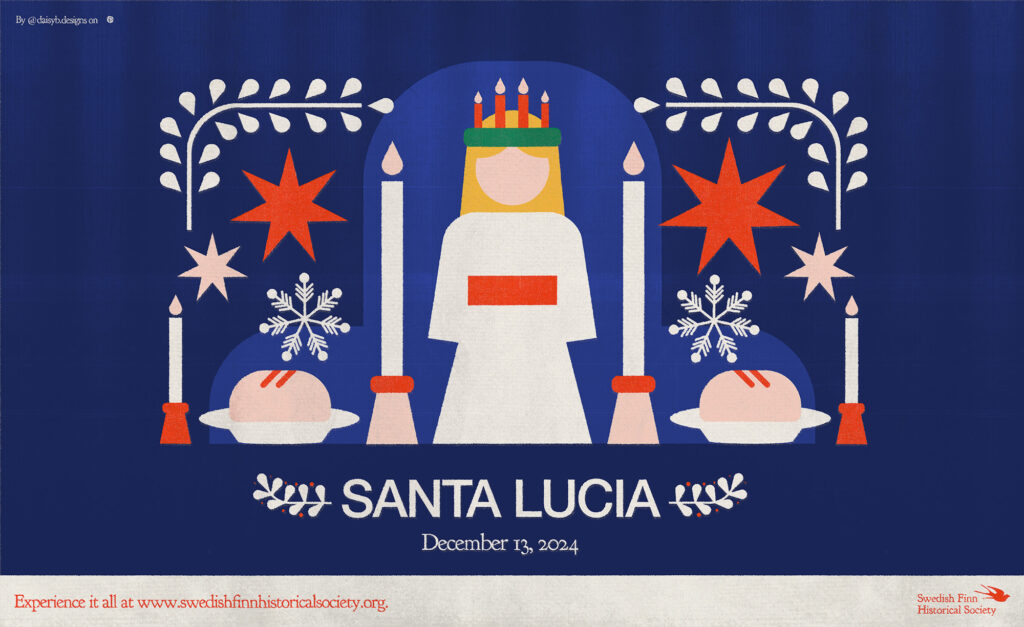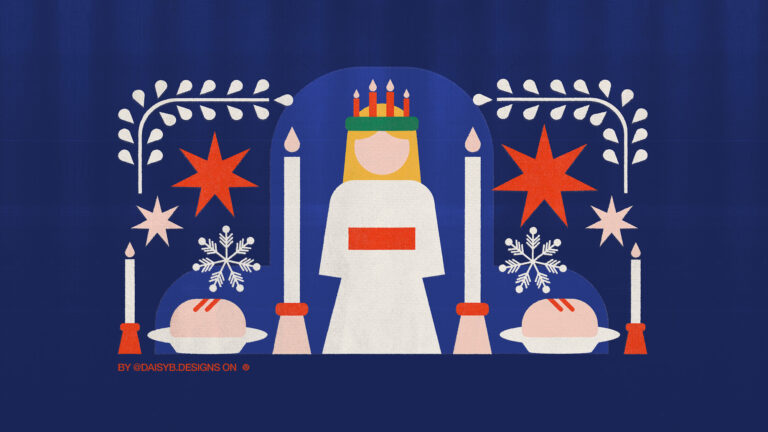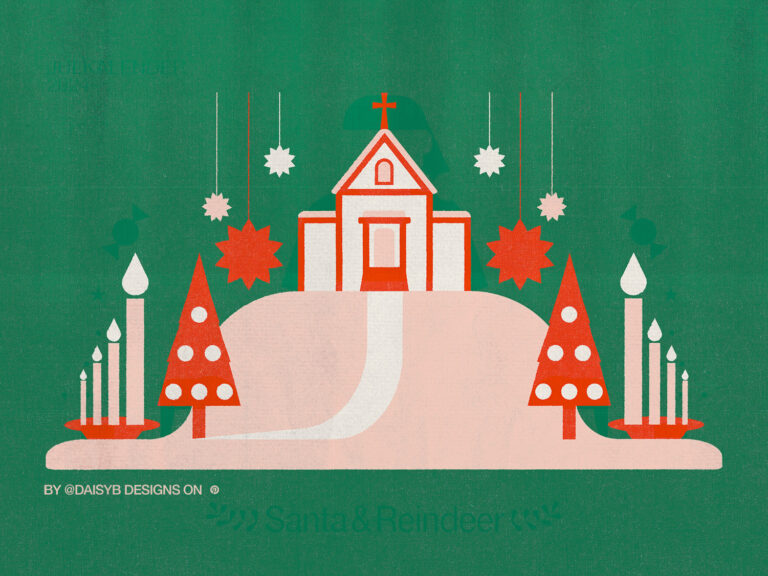Julkalender, Day 1 —Santa Lucia and her significance to the Swedish Finnish Christmastime tradition
By Karen Lundgren
December 13, 2024
Before Christianity came to the Nordic countries, the Norse marked the darkest days of winter by lighting large bonfires to scare away evil spirits and to encourage the sun to return. Luciadagen, or Santa Lucia Day, combines Norse and Christian traditions. Luciadagen (lucia means light) is celebrated on December 13, a week before the Winter Solstice. St. Lucia festivities became popular in the early 20th century and have gained in popularity in Nordic countries including Finland, particularly among Swedish speaking Finns.
The festivities celebrate Lucia of Syracuse, a 4th century martyr. A Swedish legend says that St. Lucia appeared in a part of Sweden during a time of famine in a white gown with a red sash and a crown of candles. She distributed food to the starving people and saved their lives. Today, Lucia heads a procession at local churches at Christmastime in her white dress and crown of candles followed by other girls and boys holding candles. They sing to the tune of a traditional Santa Lucia song with Swedish lyrics describing Lucia overcoming the darkest part of the year with her light. The celebration of St. Lucia signals the beginning of Christmas.
Luciadagen is also celebrated in Scandinavian communities around the world, including those in North America. In some Scandinavian homes, Lucia (often the oldest girl) awakens the families on December 13 with coffee and pastries such as saffron bread or ginger cookies.
Translated into Swedish by Ulf Wallendahl
Innan kristendomen kom till Norden markerade befolkingen vinterns mörkaste dagar genom att tända stora brasor för att skrämma bort onda andar och uppmuntra solen att återvända. Luciadagen, eller Sankta Luciadagen, kombinerar nordiska och kristna traditioner. Luciadagen (lucia betyder ljus) firas den 13 december, en vecka före vintersolståndet. Luciafestligheterna blev populära i början av 1900-talet och har vunnit i popularitet i de nordiska länderna inklusive Finland, särskilt bland svensktalande finländare.
Festligheterna firar Lucia av Syrakusa, en martyr från 300-talet. En svensk legend säger att Sankta Lucia dök upp i en del av Sverige under en tid av hungersnöd i en vit klänning med rött skärp och en krona av ljus. Hon delade ut mat till de svältande människorna och räddade deras liv. Idag leder Lucia en procession vid jultid i sin vita klänning och krona av ljus följt av andra flickor och pojkar som håller ljus. De sjunger till tonerna av en traditionell Sankta Lucia-låt med svenska texter som beskriver Lucia som övervinner den mörkaste delen av året med sitt ljus. Firandet av Lucia signalerar början av julen.
Luciadagen firas också i skandinaviska samhällen runt om i världen, inklusive de i Nordamerika. I vissa skandinaviska hem väcker Lucia (ofta den äldsta dottern) familjerna den 13 december med kaffe och bakverk som saffransbröd eller ingefärakakor.
Experience all exclusive SFHS events and information, including the 2024 Julkalender by signing up for membership or engaging with our online community.
Links to stay engaged with the 2024 Julkalender and the Swedish Finnish Historical Society







